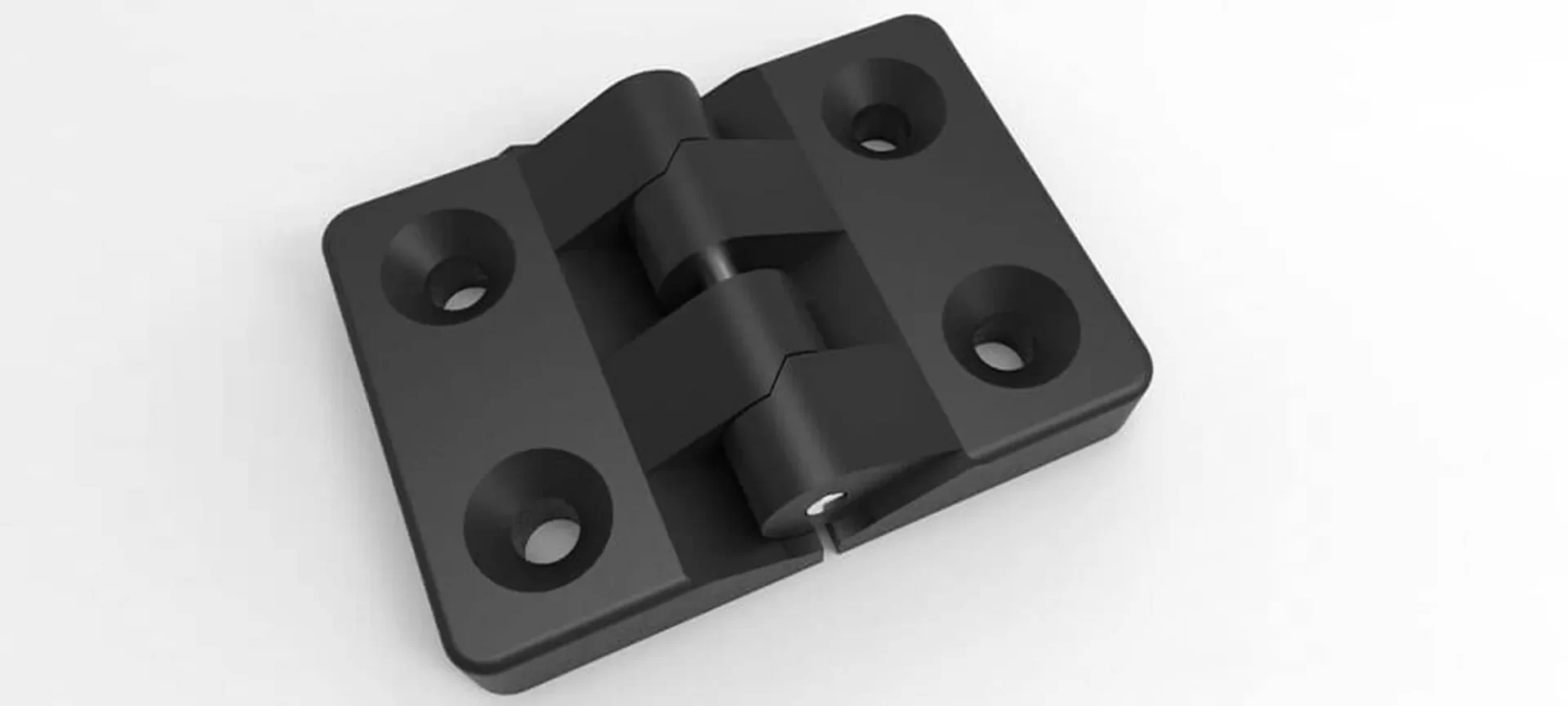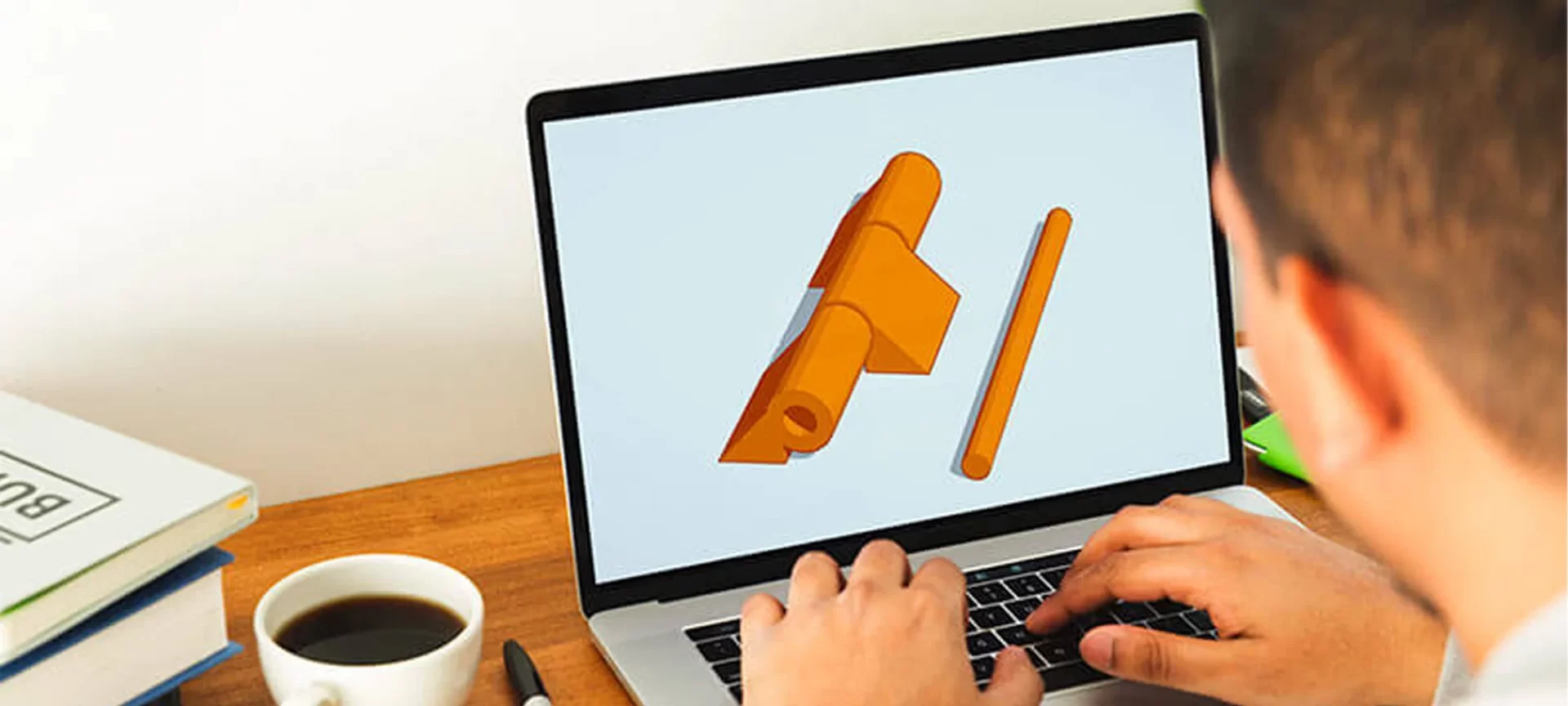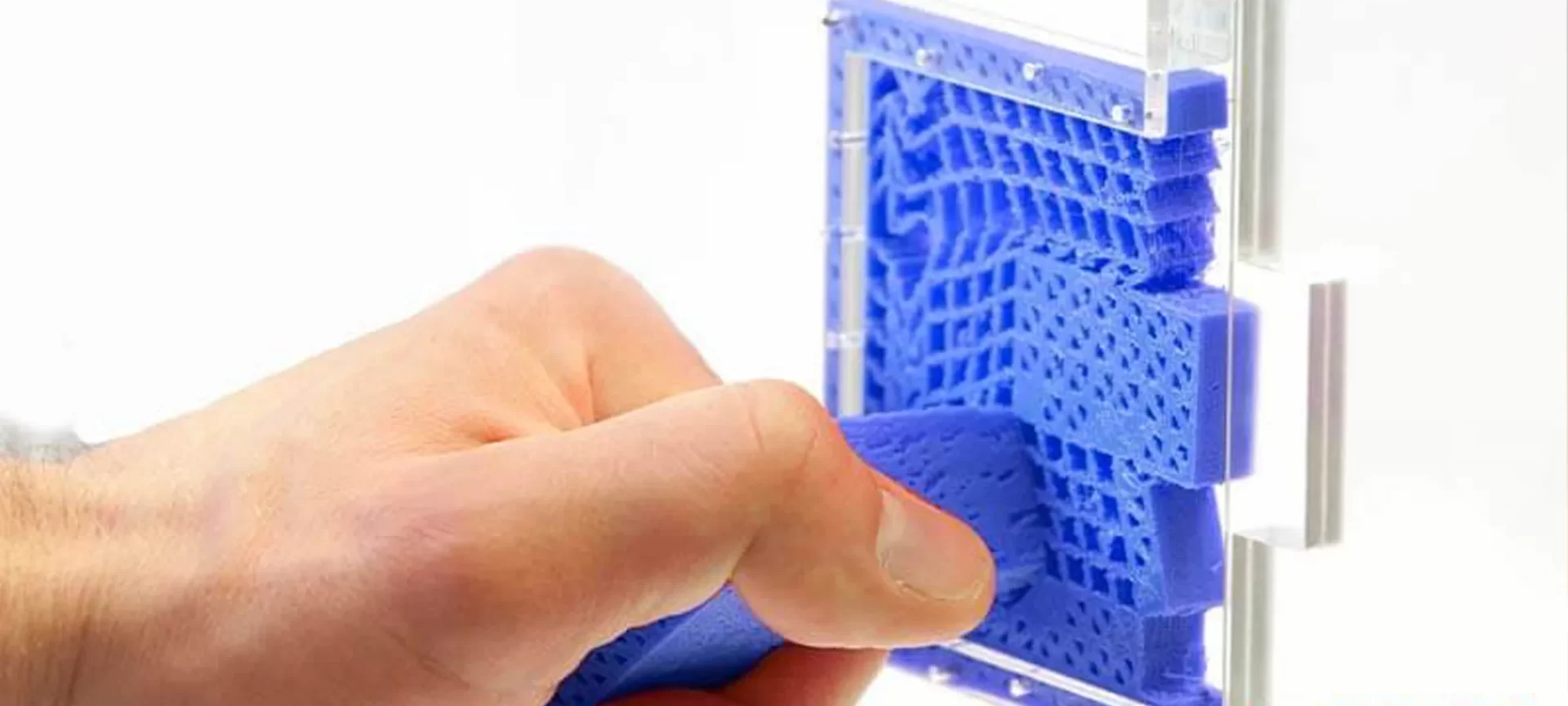The first and foremost step to print moving parts is to believe that such a thing is possible. Yes! You can 3D print moving parts in one go.
3D printing a fully assembled, multi-component part in a single job is permitting you to see dynamic components working in their prototyping stages. It is way much easier and efficient rather than 3D printing smaller parts and assembling them together.
By doing so, you can reduce the workload by 3D printing the full part in a single print. And then when the supports are washed away, you have a seamless, perfectly dynamic, and mobile part awaiting at your disposal.
To 3D print moving components, you must understand that it is not feasible to include small designs, weak parts in your design. Or else, these may be lost in between the process, for instance, in a wash tank. And the key to do it is to have air gaps in between the components and then start with the initial design.
Designing a Hinge as an Example to 3D Print Moving Parts

We all know that the hinges are usually comprised of:
- The knuckles meaning the hollow portion of the hinge in which the pin is set
- The leaves, meaning the parts of the hinge that extend laterally from the knuckles and come in contact with the external surface, and
- The pin is usually the rod that holds the leaves together by being set inside the knuckles.
But there is a way to design and print the hinge as only two components and in this example, we are going to show you how to do that in two parts?
And this method can then be magically utilized not only for making any other hinge design but also almost any mobile or dynamic component that you wish to design.
Procedure to Design a Moving Hinge
This hinge design has been experimented with in Solidworks as one part file, separated into two bodies. It’s based on the fact that you are using a series of repeating reference planes, that you need to cut out and extrude the interlocking knuckles.
Thereby making sure to add an equal amount of negative space between both the knuckles! The holes on the ends of the leaves are just placeholders because ultimately the main focus of this design is the pivot mechanism.
Primarily, the air gaps should be small enough to go unnoticed, and yet they should remain large enough to fully clear the extrusion paths because the printer lays down layers.
And this is something that allows the final part to maintain its structural integrity while its components are fully capable of moving.
You need to note here that the layer thickness of the part does not only denote the height of the layer, but also the width of each path.
A design rule that experts stuck with is to set the air gaps while designing and then 3D print moving parts is to at least double the layer thickness of your choice.
For instance, if you are 3D printing the hinge shown above in 0.007″ thickness, then you should want to make sure your air gaps are at least 0.014″.
This way nulls out almost any chance that the extruded paths will intersect and melt together during the 3D printing process. The same principle is also applicable for all layer heights.
Not to forget that you can of course go into liquid thermoplastic retention properties and argue that the air gaps can change based on what material that you use i.e. either Nylon12 or ABS-M30, but still the safest option that works with almost any material is the one that’s been just described to you.
Designing a Hinge Without any Pin

As mentioned above, the hinge can be designed using only two moving parts, for doing so you need to follow the following set of procedures.
But most importantly, please note that the model is intended for demonstrating some unique principles in regards to the complete assembly and multi-component print jobs.
For printing a hinge without any pin in the center, you need to interlink the knuckles with an air gap of 0.3mm (or 0.012″).
Some 3D printing trustworthy bloggers even recommend printing the hinge in 0.005″ layers, so that your air gaps are slightly larger than what they need to be, and doing so also works completely fine.
If you made the gaps smaller than 0.010″, there would be a good chance that the paths would eventually melt on themselves during the 3D printing process, thereby rendering the hinge immobile after cleaning.
Steps for Post Processing Moving Parts Printed in Single Job
One of the major drawbacks of the method of 3D printing/prototyping is that you will need to use more support material to ensure that these parts get printed properly.
And during the 3D printing process, the negative space or so to say the air gaps are filled with support material. Then the support material is dissolved in a wash bath.
So on the topic of support structures getting dissolved, the wash bath times do slightly increase for prints like the ones that we are discussing i.e. hinges.
It does take a little longer for the solution to reach the inner support material buried within the 3D printed part. But once the part is fully washed, you can gently try to move the parts back and forth to pry them apart.
Please take care, if you apply too much force the parts might snap. You need to ensure that the model material you are using has to compatible with soluble support material.
The supports for your 3D printed moving part need to be dissolved for letting your parts freely move after they’ve been completely cured.
Other Points to Keep in Mind

In case you’re designing parts that are going to be put into application for moving already 3D printed components that are fully assembled out of the printer, it will be a good idea if you choose to use the smallest layer thickness that your 3D printer is capable of extruding.
So, for example, if your 3D printer is capable of giving a layer thickness of 0.005″ choose it! This is recommended because thinner layers give the part a smoother finish, which means that there’ll be less friction between components when they move.
Another important thing to note is that the support material your 3D printer will use, make sure it is water-soluble as these types of prints won’t work on standard consumer printers, because standard consumers are only capable of extruding model material.
In some experts’ opinion, 3D printing is definitely not ready for mainstream mass productions to 3D print moving parts in go due to the relatively large clearances required between moving parts.
This is even not possible using the higher-end 3D printers such as the Objet that is offered by Stratasys. It is just not enough to provide precise moving parts, and this is proven in many cases including the printing test of 28-Geared Cube.
There comes a large amount of backlash in the gears as the teeth of the gears which are needed to be printed so they were 0.5mm away from neighboring teeth.
Added to it is the friction within current 3D printing materials which is generally quite high and hence would have to be greatly lubricated using some kind of lubricant, such as the PTFE lubricant.
Doing all of that again makes 3D printing quite difficult at the moment to 3D print moving parts that are consumer-ready. Also, the post-production steps are still required to make the consumer ready.
Another problem lurking in the way is the lack of 3D printing accurately being practiced with metals as they lack small clearance between moving parts thereby making it extremely difficult to produce mechanical assemblies in metal. But metal can otherwise be very useful in many precise mechanical assemblies.
The Conclusion
There exists this problem that 3D printing is still very expensive when it comes to 3D printing some geometry. It is also very slow which and hence may limit its use as a mass production technique.
Though some may say that this is a very negative approach towards 3D printing’s use! And that 3D printing is a viable manufacturing technique for mass-producing consumer-ready mechanical parts.
Experts in the field really believe with the speed that 3D printing is advancing at the moment that these issues will soon not be issues anymore. So, to 3D print moving parts, we will soon have an option that has to undergo no such issues.
But that development will still take time. At the moment 3D printing is still at very nascent stages in some areas in particular like when it comes to 3D print moving parts.
But what is worth seeing is that it is overcoming the hurdles that are coming in its way and slowly guaranteeing us the ability to design almost whatever we imagine. And that is the way to look forward.







